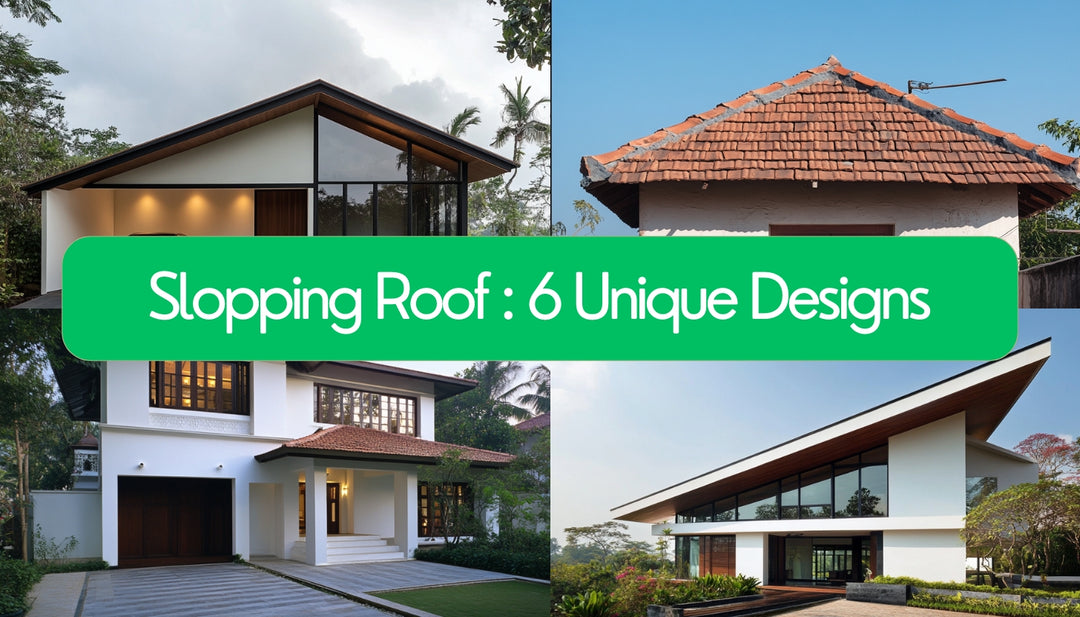Incorporating Greenery in Home Elevations: The Trend of Vertical Gardens and Their Benefits
Introduction
Bringing nature into our living spaces has long been essential to Indian architecture and interior design. From open courtyards and indoor gardens to terraces filled with flowering plants, greenery is deeply intertwined with the Indian ethos. However, with space constraints in modern apartments and houses in crowded cities, designing green spaces at home can take time and effort. This is where the innovative concept of vertical gardens comes in.
Vertical gardens allow you to transform even the smallest urban home into a relaxing oasis by using vertical structures and walls to grow your garden upwards. This emerging trend is quickly catching on across Indian metro cities as urban residents seek new ways to enjoy the benefits of indoor plants within limited spaces.
In this article, we will dive deep into understanding what vertical gardens are, their many benefits for your home, plant options suitable for Indian vertical gardens, and how to design and maintain these lush living walls. Read on to learn how to bring a slice of nature into your home with this cutting-edge design trend!
The Rise of Vertical Gardens
While growing plants on vertically oriented surfaces are a familiar concept, the formal idea of the vertical garden originated in France in 1988. Botanist Patrick Blanc pioneered the approach by completely transforming a bare urban wall into a lush vertical garden facade at the Musee du Quai Branly in Paris using hydroponics. This sparked global interest in vertical gardens as an innovative way to green urban structures.
Since then, vertical gardens have become a popular architectural element worldwide, including in India's metro cities. As urban migration leads to more crowded cities and living spaces shrink, vertical gardens allow residents to enjoy greenery even in compact apartments. Vertical surfaces are the perfect canvas for creating living green walls with excellent design flexibility, from blank walls to pillars and fences.
Vertical gardens are often called green walls or living walls. The plants in these gardens grow vertically on structures like trellises, meshes, and frames fastened to walls. Some benefits of opting for the vertical orientation are:
- It takes up zero ground space
- Allows for creative use of empty vertical surfaces like walls
- Visible greenery in balconies and patios with limited floor space
- Can be designed as impactful exterior features and facades
Let us look at some of the most significant benefits vertical gardens offer Indian homeowners.
Advantages of Incorporating Greenery in Home Elevations
Aesthetic Appeal
One of the most immediate effects of adding a vertical garden is hugely enhanced visual appeal. By infusing vibrant pops of colour, exciting textures, height variations and great shapes on otherwise barren walls and fences, vertical gardens add a lively decorative element to any home exterior.
You can design artistic patterns and landscapes or let the plants grow organically for a lush, natural look. Either way, vertical greenery injects style, vibrancy and character into your home's outdoor spaces and facades. Your home's elevation and facade will stand out in the neighbourhood with a beautiful vertical garden.
Environmental Benefits
Vertical gardens, like all indoor plants, have significant environmental benefits. They help filter out air pollutants, dust, chemicals, and particulates and purify the surrounding air. Plants also absorb heat and release oxygen through photosynthesis.
According to NASA studies, vertical gardens can reduce air temperatures in the immediate surroundings by up to 5°C through their cooling effects. With global warming and rising pollution, vertical gardens are an eco-friendly investment to help combat urban environmental issues.
Well-Being and Health
Multiple scientific studies have shown that being in the presence of indoor plants and greenery has measurable positive effects on physical and mental well-being in humans. Exposure to natural elements lowers stress and anxiety levels and improves moods.
Having indoor vertical gardens enhances focus and productivity and even speeds up recovery. Plants also increase humidity and reduce background noise. By creating your own refreshing green space at home with vertical gardens, you can boost your family's overall health.
Space Utilization
In compact urban apartments and houses with limited horizontal space, vertical gardens are the perfect solution to enjoy garden benefits. They allow you to maximise every square inch of your exterior walls, pillars, fences or balcony corners for growing plants without taking up any ground space.
With clever vertical landscaping, you can create the effect of a much larger garden, even on a small balcony or patio, by using vertical structures. Favouring cascading or trailing plants also enhances the perception of more significant space.
So, with a bare vertical surface, you can create a lush sanctuary at home.
Popular Plants for Vertical Gardens in India
When designing a vertical garden, choose plant varieties that are relatively easy to maintain and are suited to the regional climate. Some popular options for Indian vertical gardens include:
Succulents
Drought-resistant succulents like aloe vera, echeveria, agave, and kalanchoe are perfect for vertical gardens in India. They can thrive in direct sunlight and survive with less frequent watering, making maintenance easier. Their striking textures, shapes, and colours lend visual interest, which makes succulents one of the most favoured choices.
Ferns
Tropical ferns like the Boston, maidenhair, staghorn, and bird's nest grow very well in Indian conditions. They effortlessly provide graceful, cascading green foliage to soften hard edges on vertical surfaces.
Orchids
The moth orchid and lady's slipper orchid are especially suitable for vertical gardens because they are epiphytic plants that grow on other structures naturally. Their colourful blooms also create cheerful accents.
Petunias
Petunias are fast-growing flowering plants with vivid hues like purple, pink, red, and white. They can be used as lovely trailing or hanging elements in vertical gardens.
Herbs
It is very convenient to grow kitchen herbs like mint, oregano, thyme and basil on vertical surfaces as they can be within arm's reach. Hang them near kitchen windowsills or balconies.
Designing Vertical Gardens in Indian Homes
Now that we have seen the many benefits of vertical gardens and some suitable plants, how do we design and install these in Indian homes? Here are some tips for creating your thriving vertical garden:
Structural Design
The vertical structure is the most critical foundation element for a successful garden. The frame must be sturdy enough to hold the weight of the plants, soil, and water without sagging or warping over time.
- For lightweight, smaller gardens, painted metal trellises or mesh sheets fastened securely to the wall work well.
- For more extensive vertical gardens, use specialised modular frames with built-in irrigation systems for support.
- Ensure screws and bolts are firmly anchored into wall studs, and reinforcement is present.
Layout and Plant Selection
Think of the overall design and layout before choosing plants. Mix flowering plants for colour with leafy greens and cascading varieties. Combining different textures and shapes creates interest.
- Place larger, heavier plants at the bottom and grazing varieties on top.
- Alternate plants with different water needs.
- Select plants suitable for the light direction and vertical airflow.
Irrigation and Soil
Mix cocopeat, vermiculite, perlite and compost as a growing medium. Install an automated drip irrigation system with timers to provide regular hydration to plants.
Proper drainage is essential to prevent root rot and fungal diseases. Place a drainage layer behind the vertical garden frame.
Maintenance
Prune and trim plants regularly to control outward growth. Remove dead leaves and flowers promptly to maintain health. Use organic neem oil sprays to prevent pests and fungal issues.
Fertilise plants every few weeks with a balanced organic fertiliser mixed in water. Test soil pH periodically and amend if needed.
By following these tips, you can create stunning, lush vertical gardens that enormously transform the look of your home's elevation and enhance your living space.
Stay tuned for the next part, where we look at integrating vertical gardens with other design elements, real-world case studies, and concluding ideas. Let your imagination run wild and get started with beautifying your home with vertical greenery today!
Blending Vertical Gardens with Other Design Features
Vertical garden landscapes create a dynamic and inviting green facade. But they truly stand out when combined thoughtfully with other exterior design features. Here are some tips for blending your vertical garden seamlessly:
Combining with Water Elements
Water features like wall fountains provide an elegant complement to the lush foliage of a vertical garden. Water cascading down a wall enlivens the standing garden and makes it a focal point. The fluidity and serenity of water contrast beautifully with the vibrancy of plants.
Install wall-mounted fountains made of tempered glass, metals, or weather-resistant composites. Opt for wider spouts to create sheet flows rather than narrow jets, illuminating with subtle lighting for the night.
Creative Lighting
Outdoor lighting focused on your vertical garden is an excellent way to highlight it after dusk. Upwash and downwash lighting cast dramatic shadows that bring out the depth and textures of your garden.
You can also install low-voltage LED strips concealed within or behind the garden. The glow reflects softly off the plants, creating a magical ambience on your home's facade in the evenings.
Matching Colors
Paint the exposed background wall in a colour that complements the hues of your vertical garden plants. Shades of green, blue, yellow, pink or neutrals like beige and grey work beautifully as backdrops, making the plants pop visually.
Alternatively, use shades of white or very light pastels to not compete with the vibrant plants. Avoid jarring palette pairings.
Incorporating Seating Areas
Add an outdoor seating space like a bench or lounging chairs near your vertical garden. This lets you admire your lush green facade up close and personal and immerse yourself in the sights, scents, and sounds.
It creates a relaxation zone right at your home's entrance or on the patio, balcony, or backyard. Accent with outdoor drapes, throw pillows, and side tables for your morning tea amidst your new oasis.
Tying to Overall Theme
Ensure your vertical garden blends with the overall style, materials, and colour scheme of your home's exterior. For modern, minimalist homes, geometric metal frames and succulents work well. Mediterranean styles benefit from a mix of ferns, vines, and herbs.
Indian ethnic home themes can incorporate hanging earthen pots filled with flowering climbers on latticed frames. Let your vertical garden reflect your personality.
Real-World Case Study of an Indian Vertical Garden
To give you an idea of how homeowners are implementing vertical gardens, let's look at a real-world example from a Mumbai home:
The Shahs wanted to maximise their small apartment's balcony for greenery. They installed a 6ft x 4ft galvanised trellis securely fastened to two adjacent walls and planted easy-care succulents like agave, aloe, and philodendrons.
They used a 14-inch deep planting trough at the base filled with drainage rocks and cocopeat to prevent soil erosion. Drip tubing with spray heads was set up for easy watering on timers. For protection from the rains, they added a simple acrylic sheet canopy.
Within a few months, their once barren balcony was transformed into a cheerful green oasis! The succulents needed little maintenance while the philodendrons trailed gracefully from the heights, giving the illusion of a much larger garden. The Shahs now enjoy breakfast amidst their vertical garden creation.
This real-world example demonstrates how you can implement eye-catching vertical gardens with some simple planning to enhance your home's elevation.
Conclusion
Incorporating vertical gardens is an ingenious way to bring the joys and benefits of greenery even into compact modern homes. They lend beauty, improve air quality, provide calming relaxation zones and help make efficient use of vertical space.
With a well-designed structure, irrigation system, and a mix of easy-care plants suitable for your climate, you can create living green walls that will keep flourishing. Vertical gardens provide a refreshing touch of nature and unlimited design flexibility.
So unleash your creativity and vertical gardening skills to enhance your home's elevations. Let your bare walls bloom into a lush sanctuary you and your family can enjoy for years. Turn your love for plants into a satisfying vertical gardening adventure!










